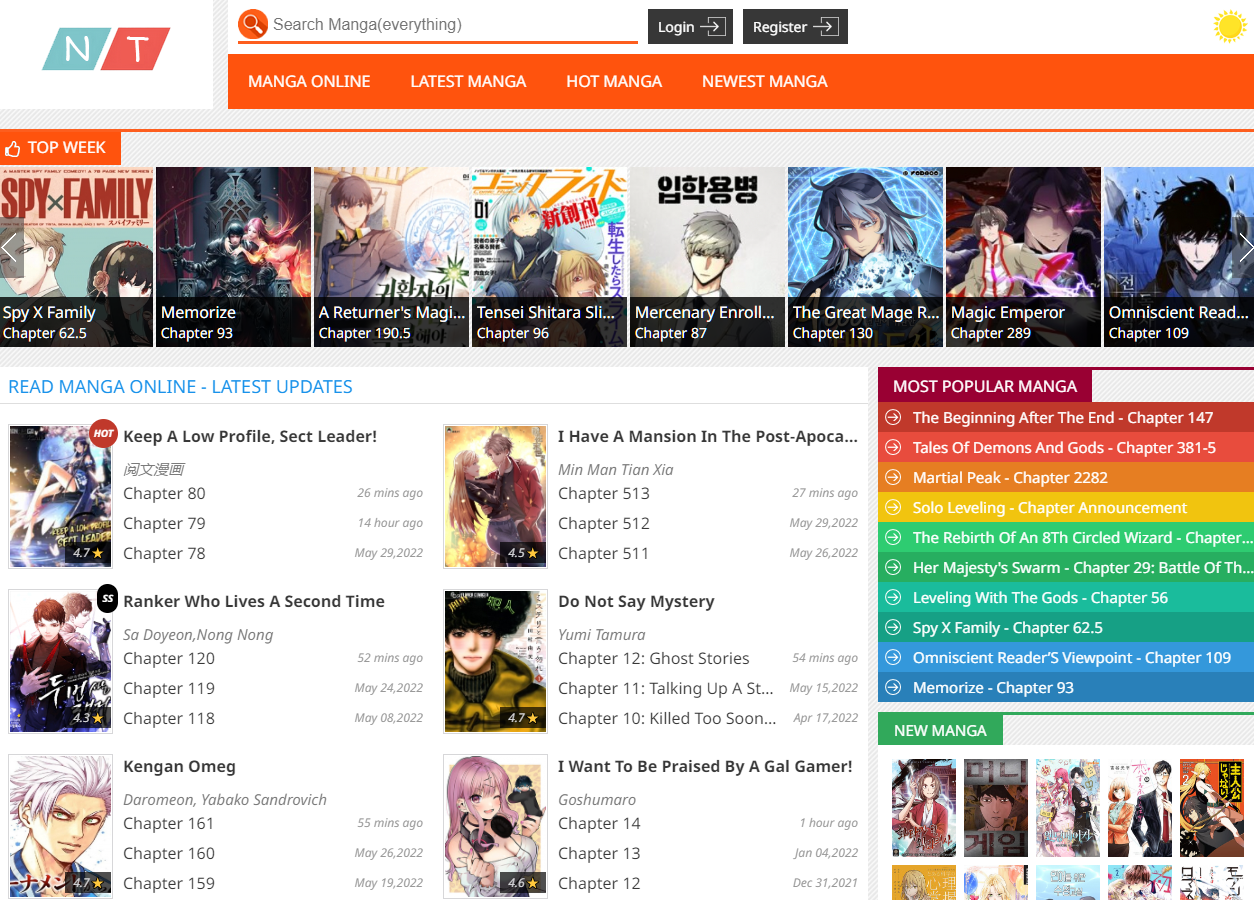🌟 Dịch Vụ Chất Lượng Cao 🌟
✓ 301 Redirect: Chuyển hướng domain an toàn, giữ nguyên giá trị SEO
✓ Guest Post: Đăng bài chất lượng trên các website uy tín
✓ Hỗ trợ tư vấn 24/7
✓ Báo giá cạnh tranh
✓ Thời gian xử lý nhanh chóng
📱 Liên hệ ngay qua Telegram: @subdomaingov
⚡ Hỗ trợ tư vấn miễn phí
Akete Mo Kurete Mo: Zoku - Itsuka Koi Ni Naru Made
₫5.325.795
Akete Mo Kurete Mo: Zoku - Itsuka Koi Ni Naru Made | Platforms: Your Guide to Free and Paid Sites
Product description
Discovering the Enigmatic World of Manga - A Summary of Dead End
In the landscape of contemporary manga, Manga summary Dead End has emerged as a notable work that captures the imagination of readers. This engaging story revolves around themes of adventure, suspense, and personal growth, drawing fans into its unique world. As we explore this captivating tale, we'll delve into its characters, plot progression, and the underlying messages that resonate with audiences worldwide.
The Premise of Dead End: A Journey Begins
Dead End begins with an intriguing premise that sets the stage for the characters’ adventures. The narrative unfolds in a world where traditional boundaries of reality are challenged, allowing for creative storytelling that pushes the limits of the genre.
Setting the Stage for Adventure
The initial setting of Dead End is essential for understanding the world in which the characters operate.
The story takes place in a fictional universe where magical elements coexist alongside technology. This blend creates a rich backdrop that enhances the depth of the narrative. Characters navigate through lush forests, urban landscapes, and mystical realms, each environment presenting unique challenges and opportunities for growth.
Moreover, the presence of diverse factions throughout the story adds layers to the overarching conflict. Each faction holds different ideologies and motivations, contributing to the complexity of the tale. Readers are not merely passive observers; they are invited to immerse themselves in this vibrant landscape, fostering a sense of connection with the narrative.
Introducing the Main Characters
At the heart of any compelling story lies its characters. In Manga summary Dead End, we meet a cast that embodies distinct personalities and motivations.
The protagonist is a young hero whose journey serves as the backbone of the tale. Their struggles and triumphs resonate deeply with readers, showcasing relatable themes like perseverance and self-discovery.
Supporting characters add richness to the overall narrative. Each one brings their own backstory and perspectives, often clashing or aligning with the protagonist’s goals. These dynamics create tension and drama, keeping readers on the edge of their seats.
Themes Explored in Dead End
One of the standout features of Dead End is its exploration of profound themes that elevate the story beyond mere entertainment.
Identity is a recurring theme, as characters confront their pasts, question their beliefs, and evolve throughout the series. This introspection encourages readers to reflect on their journeys and the importance of understanding oneself before forging ahead.
Another significant theme is friendship and camaraderie. The bonds formed between characters play a crucial role in shaping their destinies. Readers witness the strength found in unity, highlighting the importance of relationships in overcoming adversity.
Plot Development: Twists and Turns
As the narrative progresses, Dead End takes readers on a rollercoaster ride of emotions, filled with unexpected twists that challenge expectations.
Pacing the Story
The pacing of Dead End is meticulously crafted, with moments of high tension balanced by quieter, character-driven scenes.
Action sequences propel the plot forward, showcasing the characters' growth as they face formidable foes. However, it is the slower moments that allow for deeper character exploration, giving readers insights into their motivations and fears. This balance ensures that the story remains engaging while allowing for emotional investment in the characters’ journeys.
Key Turning Points
Throughout the manga, pivotal turning points reshape the trajectory of the story.
A critical moment occurs when the protagonist faces a moral dilemma that tests their values. This conflict resonates with readers, prompting them to consider their own beliefs and ethical boundaries. It serves as a catalyst for character development and drives the plot toward a more complex resolution.
Additionally, unexpected alliances form during the story, shifting the power dynamics among factions. These developments not only heighten the stakes but also emphasize the fluidity of relationships and the unpredictable nature of trust.
Climax and Resolution
As the narrative reaches its climax, tensions peak, leading to a thrilling confrontation that determines the fate of not just the characters, but the entire world.
The resolution is both satisfying and thought-provoking, leaving readers pondering the implications of the characters' choices. While some arcs reach closure, others leave open-ended questions, inviting speculation and discussion within the fan community.
Character Arcs: Growth and Transformation
One of the most rewarding aspects of Dead End is the character arcs that unfold throughout the series.
Protagonist's Evolution
The protagonist’s journey is one of the most compelling features of the narrative.
Initially introduced as an inexperienced individual grappling with self-doubt, the protagonist undergoes a transformative experience. Through trials and tribulations, they discover inner strength and resilience. This evolution is expertly portrayed, allowing readers to witness the gradual changes in mindset and behavior.
The catalyst for this growth often comes from external conflicts and interactions with other characters. Each encounter shapes the protagonist's worldview, nudging them closer to becoming the hero they were destined to be.
Supporting Characters' Journeys
While the protagonist experiences significant growth, supporting characters also embark on their own journeys.
Each character brings a unique perspective that influences the overarching narrative. For example, a skilled mentor figure may grapple with their past failures, creating a layered dynamic with the protagonist.
Furthermore, rivalries often evolve into friendships, showcasing the potential for reconciliation and understanding. The depth of these character arcs adds richness to the storyline, inviting readers to invest in not only the main character but the entire ensemble.
Overall Impact of Character Development
The character development in Dead End transcends typical tropes found in many manga.
Readers are invited to emotionally connect with the characters on a profound level. Moments of vulnerability, doubt, and triumph resonate deeply, illustrating the complexities of human experience. By portraying nuanced character arcs, the manga elevates itself to a work of art that fosters empathy and reflection.
Visual Storytelling: Artistry and Style
In manga, visual storytelling plays a pivotal role in conveying emotions and enhancing the narrative.
Artistic Style and Design
Dead End features a distinctive artistic style that captivates readers from the very first panel.
The character designs are meticulously crafted, reflecting the individuality of each personage. Attention to detail in expressions and body language allows readers to gauge emotions at a glance, enriching the overall experience.
Background artistry further immerses readers in the world of Dead End. Each environment is thoughtfully illustrated, creating a sense of place that complements the narrative. The colors and line work draw attention to key moments, emphasizing the emotional weight of specific scenes.
Utilize of Panel Layouts
The panel layouts in Dead End contribute significantly to the pacing and tone of the story.
Dynamic action sequences utilize larger panels to create a sense of urgency, while intimate character moments are often presented through smaller, more focused panels. This variation directs the reader’s attention, guiding them through the ebb and flow of the narrative.
Transitions between panels are seamless, allowing for a fluid reading experience. This attention to detail in visual storytelling enhances the overall impact of the narrative, making it a truly immersive journey.
Symbolism and Imagery
Visual motifs appear throughout Dead End, adding layers of meaning to the story.
Recurring symbols, such as certain colors or objects, often correspond to themes of transformation and loss. This use of symbolism encourages readers to engage more actively with the text, fostering a deeper understanding of the characters’ journeys.
Imagery also serves to foreshadow events, hinting at future developments while maintaining an air of mystery. This technique invites readers to speculate on potential outcomes, adding to the excitement of following the story.
FAQs about Manga Summary Dead End
What is the primary theme of Dead End?
The primary theme of Dead End revolves around self-discovery and personal growth. The protagonist embarks on a journey that challenges them to confront their identity, beliefs, and relationships.
How does Dead End differentiate itself from other manga?
Dead End stands out due to its rich world-building, complex character arcs, and thoughtful exploration of profound themes. Its unique blend of adventure and introspection draws in readers seeking depth in their stories.
Are there any notable character dynamics in Dead End?
Yes, the character dynamics are a highlight of Dead End. Relationships evolve throughout the story, showcasing themes of friendship, rivalry, and trust, which add depth and complexity to the narrative.
What can readers expect from the artwork in Dead End?
Readers can expect stunning visuals characterized by a distinctive art style, detailed character designs, and expressive backgrounds. The artwork complements the storytelling, enhancing emotional engagement.
Is there a conclusion to the story in Dead End?
While some arcs reach closure, Dead End leaves certain elements open-ended, inviting readers to ponder the implications of the characters’ choices and the world they inhabit.
Conclusion
In summary, the Manga summary Dead End encapsulates a remarkable journey through a richly woven narrative filled with adventure, complex characters, and profound themes. The skillful blending of storytelling, artistry, and character development elevates this work to a noteworthy position within the manga landscape. It invites readers to embark on an emotional adventure that resonates long after the final page is turned. Whether you're a seasoned manga enthusiast or new to the genre, Dead End offers an experience worth exploring.
Read Full: mangakaklot







